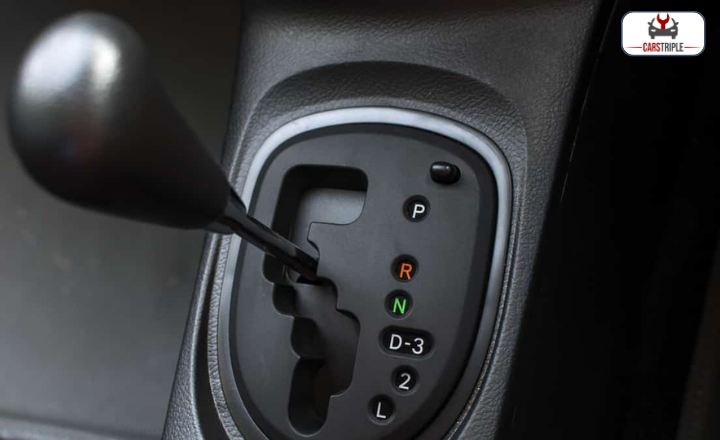The transmission is a crucial part of any vehicle. The car won’t drive when the gears don’t work right. Sometimes, problems can make one or more gears stop working. This annoying situation happens more often than you’d believe and can ruin your day.
Our article, car not go in reverse: How To Fix It, explains why cars sometimes won’t go backward. It also guides drivers on how to solve this confusing problem themselves before they need to call a professional for help.
Top 8 Reasons Your Car not Go In Reverse
Here we have shortlisted top 8 reasons why your car not go in reverse.
The teeth are broken on the reverse gear
Teeth breaking in reverse gear are usually caused by a mistake made by the driver or someone new to driving a manual car. This problem often happens when the driver tries to change into reverse without fully letting go of the clutch or while the car is still moving forward. You can tell this is happening if you hear loud clunks or clicking sounds.
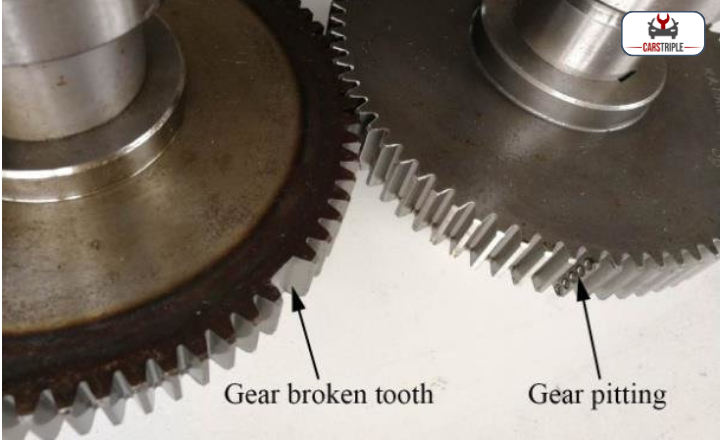
The sounds you hear suggest the gears are grinding against each other, which may lead to severe damage. Fixing this kind of damage is not easy and requires much work. A professional mechanic has to take out the transmission and check it over. They will then have to replace any gears that have been damaged. This isn’t something that can be fixed quickly and could cost a lot of money, depending on your car and how bad the damage is.
Incorrect lockout ring
The lockout ring is an integral part of a car’s gear system. It stops the car from accidentally going into reverse when it’s moving forward. This keeps accidents from happening and protects the transmission system from severe damage. You might have trouble with your lockout ring, like being unable to go into reverse even when you’re stopped completely.
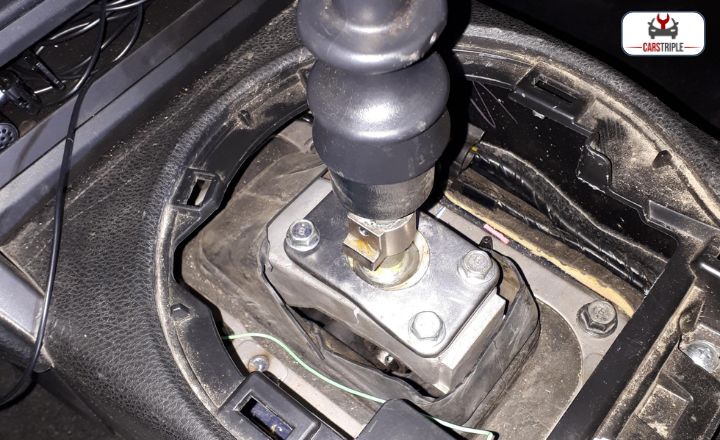
This could happen because of normal wear and tear or things not lining up right. It would help if you had a mechanic look at it right away. They can check out your car’s gear system, find any issues, and fix or replace parts as needed to ensure you can drive safely.
Inadequate transmission fluid
A car might struggle to go in reverse if it doesn’t have enough transmission fluid. This fluid is like oil for the intricate gears and parts in your car’s transmission system. Not having enough can cause gears to slip, make shifting hard, and even cause these parts to get too hot. The gear that makes your car go backward isn’t safe from these issues.
When the fluid has been low for a long time, it might damage your car because of too much heat and friction. Not having enough transmission fluid can cause problems with moving gears, including being unable to shift into reverse. Adding more fluid could fix the problem for a little while. But you should check for leaks or keep an eye out if the problem persists after you fill it up again. There could be a bigger problem going on.
The real problem could be something physical, like gears that are worn out or problems with the bands in the transmission system. Or an electrical issue could mess up your car’s ability to use certain gears. No matter what, you should take your car to a mechanic who knows what they’re doing so they can figure out what’s wrong and fix it. Ignoring or putting off fixing transmission problems can lead to worse damage and expensive fixes down the line.
Transposition position sensor in error
It is also known as the Transmission Position Sensor or Neutral Safety Switch; the Transposition Position Sensor is essential in managing your car’s gears. A malfunction or failure can stop your car from going into reverse. It could also put your car into limp mode, limiting the transmission to third gear to avoid more engine damage.

To see if this sensor is causing problems, check for a check engine light on your dashboard. This light usually means a problem in one of the car’s systems. Using a car diagnostic tool, you can get more detailed information about the issue. This tool reads error codes stored in your car’s powertrain control module. It helps determine whether the problem is with the transposition position sensor or another part of your vehicle.
Deteriorated valve body
A valve body is an essential component of an automatic transmission. It controls gear shifts by managing the flow of hydraulic fluid to the right places. Problems like delays or even total failure in shifting into reverse can occur if it begins to degrade or gets damaged. This happens because the valve body isn’t correctly guiding the hydraulic fluid, causing it to fail to activate the needed gears.
Also, a common issue with manual gearbox cars is difficulty shifting into reverse or being unable to. This problem often stems from the shifter mechanism. Shifter linkage or wires bent or broken are usually responsible for this, as they disrupt the gear shift’s smooth functioning. Shifter bushings, which can wear out due to continuous use, heat exposure, and other harsh conditions, could also be at fault. A practical and cost-efficient initial solution is often replacing these bushings.
A dirty filter or transmission fluid
A car might struggle to switch to reverse or other gears due to a dirty filter or unclean transmission fluid. Hardened deposits or debris can sometimes pollute the transmission fluid, limiting its flow and disrupting smooth gear changes. Changing the transmission fluid and filter can often solve this problem, even if it’s rare.
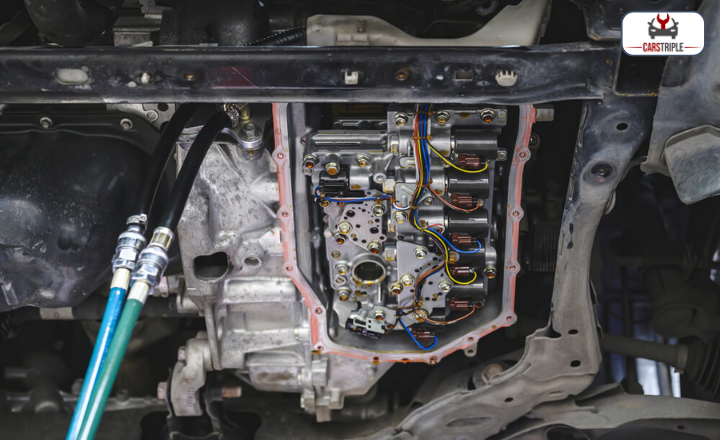
This solution applies to cars that have a filter. To determine if this is causing your problem, inspect your transmission fluid’s state. A change might be necessary if it looks dirty or has a burnt odor. Changing the fluid might not immediately fix the reverse gear problem. But this maintenance task can help prevent more significant transmission issues.
Transmission range sensor
The neutral safety switch, the transmission range sensor, is vital to your car’s automatic transmission system. This sensor talks to the car’s computer to determine your chosen gear. A faulty sensor can stop gears from engaging correctly, including shifting to reverse or higher gears. The computer might struggle to switch gears properly if the sensor fails to provide accurate data.
This could cause problems like trouble shifting gears, particularly those above third, and may even stop you from shifting into reverse.
How To Fix A Car not Go In Reverse
You don’t have to be an expert car mechanic to figure out and fix your car the way we do. Keep these essential tips in mind.
Check the level of the transmission fluid
Look at the amount of transmission fluid. It’s easy to check the transmission fluid level for most cars. We suggest you look at a repair manual that’s made for your particular car model. Here is an essential step-by-step guide on doing this check for most types of cars.
- Engage the parking brake and ensure the car is on a flat surface.
- Start the engine and allow it to idle.
- Keep the car in Neutral or Park mode.
- Refer to your vehicle’s owner’s manual to check if the engine needs to be off.
- Locate and remove the fluid dipstick, usually near where the transmission connects with the back of the engine.
- Exercise caution, as the fluid could be hot.
- Clean off any residue from the dipstick before re-inserting it.
- Remove the dipstick again to check fluid level indicators.
- If the fluid doesn’t reach the ‘Full Warm’ line, the additional liquid needs to be added.
Read codes from TCM
Indeed, you can use specific code scanners to interpret codes from TCM DTCs. These gadgets link up to your car’s OBDII port. Once hooked up, they’ll check and show any problem codes stored in the Transmission Control Module (TCM).
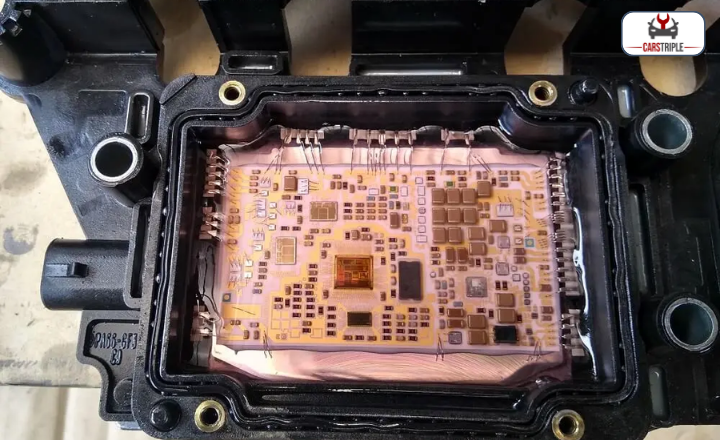
The codes could be generic ones pointing out usual problems in many vehicles or more detailed ones highlighting a specific issue in your car’s transmission system. By looking at a list of problem codes, you can decode these codes and figure out possible issues in your car’s transmission.
Flush transmission fluid
Checking your transmission fluid and finding it old or burnt may mean you need a flush. But remember that sealed transmissions can only be serviced by a dealer. Also, not all manufacturers suggest flushing. Think about these points before you take any action.
- Refer to the owner’s manual for detailed information.
- Ensure all required supplies are readily available before initiating the fluid change.
- Carefully carry the liquid to an approved disposal site.
Many auto parts stores offer this service free of charge.
Check data from gear level and transmission range sensors
A code scanner checks data from gear level and transmission range sensors. It can pinpoint any problems in these sensors. You should also match the scanner readings to the factory service manual. This practice shows you whether the readings fall within normal limits or not.
Readings outside these limits could signal issues with one or both sensors. You mentioned that dirt or pollution could give false readings on these sensors. Cleaning and putting them back in place might fix this issue. But, when unusual readings persist even after cleaning and reinstalling, it’s time to consider getting new sensors.
Examine the cables and shifter mechanism
Your car’s manual transmission may be acting up, making it difficult to shift into reverse. This could be due to your shifter mechanism, cables, or clutch issues. Your shifter mechanism and cables need some tweaking for smoother gear changes. Your vehicle’s service manual has step-by-step instructions on how to fix these parts.
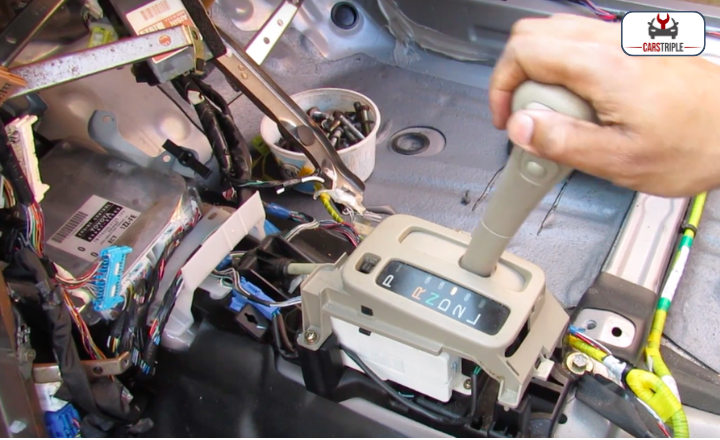
But let’s say you can shift into reverse when the engine is off but not when it’s on, this could mean your clutch is the problem. The clutch disconnects the transmission from the engine, helping you switch gears. Shifting gears could become difficult or even impossible if they malfunction incorrectly. It needs to be fixed. Replacing a clutch might sound intimidating, but it’s often less complicated and more affordable than repairing a transmission.
Contact a professional
You can learn much about transmissions by studying independently and getting practical experience. But some jobs are tricky and need an expert’s touch. When you hire a professional, you ensure the work is done right. It also reduces the chance of messing something up and causing more damage. It might cost more initially but could save you money on extensive repairs later.
How Much Does It Cost To Fix A Transmission?
Changing or adding transmission fluid usually costs between $10 and $25. On the other hand, for most cars, a new transmission can cost from $1800 to $3400. But remember, just adding more fluid isn’t always the solution. Low fluid levels may indicate other issues like leaks or internal damage. Getting a professional opinion before deciding on any fixes or replacements is best. This helps you save money on unnecessary work and ensures your car gets the proper care.
What Are The Signs Of Low Transmission Fluid?
Your car might have some problems if the transmission fluid is low. You might find it hard to change gears, and the gear shifts might need to be smoother. This applies to both automatic and manual cars. Sometimes, your car could switch between four-wheel drive unexpectedly, which isn’t safe.
You might also hear weird sounds like grinding or squealing when you shift gears; another sign of low transmission fluid is a burning smell because the current fluid could get too hot from insufficient lubrication. Seeing red fluid under your car could mean a leak in the transmission fluid needs quick fixing to avoid lower levels.
Conclusion
When a car not go in reverse, it can be frustrating and potentially dangerous. You can figure out and solve the issue by following the above mentioned steps. These steps involve checking the level of your transmission fluid, looking for any physical damage, or considering whether it’s an issue with the electricity. Please don’t ask a professional for help when you need help fixing it yourself. Keeping your vehicle working right is essential for your safety and helps it last longer.
FAQ’s
How do I identify if my car’s transmission is causing the reverse issue?
If your car isn’t going into reverse consistently and you also notice other gears not functioning properly, it could be an issue with the transmission. Seek professional assistance for detailed diagnosis.
Are there warning signs before my car refuses to go in reverse?
Sure, some signs can include issues when shifting, strange noises from the car when it’s put into reverse, or a delay when trying to shift into reverse.

